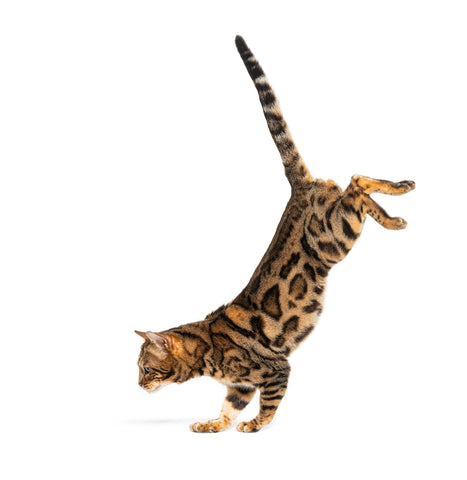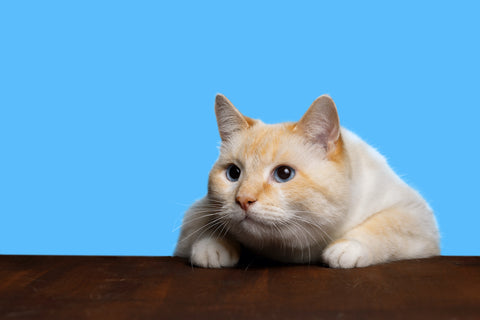How Many Bones Does a Cat Have?
Cats are fascinating creatures, known for their agility, grace, and sometimes, their mysterious behavior. One aspect of their anatomy that contributes to their remarkable abilities is their skeletal structure. Have you ever wondered how many bones a cat has?
What Makes a Cat's Skeleton So Unique?
The Cat's Skeleton
A cat's skeleton is a complex and finely-tuned system that provides the foundation for its physical prowess. Just like in humans, the cat's skeleton serves several vital functions, including support, protection, and mobility. While there can be some variations among individual cats, the average number of bones in a cat's body is remarkably consistent.

Number of Bones in a Cat's Body
A typical cat has around 230 to 250 bones in its body, although this number can vary slightly depending on factors like age, breed, and individual variations. This number is quite intriguing when you consider that an adult human has 206 bones on average. The higher number of bones in a cat is due to their exceptionally flexible spine, which gives them their incredible agility.
Major Categories of Bones in a Cat's Skeleton
Skull: The cat's skull consists of several bones, including the cranium, mandible (lower jaw), and various facial bones. The skull protects the brain and sensory organs.
Vertebrae: Cats have more vertebrae in their spine than humans, which contributes to their exceptional flexibility. This allows them to twist, turn, and pounce with ease.
Ribs: The ribcage provides protection to vital organs such as the heart and lungs. Cats typically have 13 pairs of ribs.
Limbs: The front limbs (forelimbs) contain several bones, including the humerus, radius, ulna, and numerous smaller bones in the paws. The hind limbs (hindlimbs) also have similar bones, along with the femur, tibia, and fibula.
Pelvis: The pelvis is made up of several bones that support the hindlimbs and protect the reproductive and urinary organs.
Tail: A cat's tail is composed of a series of small vertebrae, usually numbering around 20 to 23.
How Does a Cat's Skeleton Allow It to Move so Gracefully?
A cat's skeleton is a marvel of nature, and it plays a pivotal role in allowing these animals to move gracefully and with remarkable agility.
Let's delve a bit deeper into the specifics of a cat's skeletal system and how it enables them to perform some of their most impressive feats.
Here are several key factors that contribute to a cat's graceful movements:
The Spine and Agility
Cats are renowned for their agility, and their spine is a critical component that allows them to twist and contort their bodies with ease. Their vertebrae are not only numerous but also incredibly flexible. This flexibility is essential for actions like climbing, jumping, and squeezing through tight spaces. It's one of the reasons cats are such skilled hunters.
Hunting Adaptations
Cats have specialized adaptations in their skeleton that make them formidable hunters. Their retractable claws are supported by an intricate system of bones and muscles in their paws. The ability to extend and retract their claws rapidly is crucial for catching prey and maintaining the sharpness of their claws.
Shoulder Blades and Climbing
Cats have remarkable shoulder blades, which are not directly attached to the rest of the skeleton by bone. This unique feature allows their shoulder blades to move independently, enhancing their ability to climb trees and leap gracefully from heights.
Collarbone (Clavicle)
Unlike humans, cats have a collarbone that is not fused to the rest of their skeleton. This "floating" clavicle provides more freedom for their front legs and shoulders, making them better at stalking, pouncing, and stalking.
Paw Bones
A cat's paw is a complex structure with numerous small bones that provide fine motor control and a firm grip. Their ability to grasp objects with precision and balance on narrow surfaces is a testament to the dexterity of their paw bones.
Tail Communication
A cat's tail is an extension of their spine, made up of several small, interconnected vertebrae. Beyond its role in balance, a cat's tail serves as a communication tool. The position and movement of the tail can convey emotions and intentions, whether they're relaxed, excited, or ready to pounce.

How to Keep Your Cat's Skeleton Healthy?
Maintaining your cat's skeletal health is essential for their overall well-being and longevity. Here are several tips to help keep your cat's skeleton healthy:
Balanced Diet: Ensure your cat receives a well-balanced diet that is appropriate for their age, size, and activity level. Proper nutrition is crucial for healthy bones and joints. High-quality cat food and, if necessary, supplements recommended by your veterinarian can help maintain bone health.
Adequate Calcium and Vitamin D: These nutrients are essential for bone health. Make sure your cat's diet includes adequate levels of calcium and vitamin D. Many commercial cat foods are formulated to provide these nutrients, but it's always a good idea to consult with your vet to confirm your cat's specific requirements.
Weight Management: Keeping your cat at a healthy weight is crucial. Excess weight can put strain on their joints and bones, potentially leading to issues like arthritis. Monitor your cat's weight, and if necessary, work with your veterinarian to establish a weight management plan.
Regular Exercise: Encourage physical activity to maintain muscle strength and bone health. Play with your cat using toys that stimulate their natural hunting instincts. Cat trees and scratching posts can also help with climbing and stretching, promoting bone and muscle health.
Supervised Outdoor Time: If your cat enjoys outdoor adventures, ensure they are supervised and safe. Outdoor activities can provide valuable exercise and mental stimulation. However, be mindful of potential dangers, such as traffic, other animals, and environmental toxins.
Regular Veterinary Check-ups: Schedule regular check-ups with your veterinarian. They can monitor your cat's overall health, detect any skeletal issues early, and provide guidance on preventive care.
Joint Supplements: For older cats or those with joint issues, your veterinarian may recommend joint supplements like glucosamine and chondroitin. These supplements can help support joint health and reduce the risk of arthritis.
Dental Care: Good dental health is connected to overall well-being, including skeletal health. Brush your cat's teeth regularly and provide dental treats or toys to reduce plaque and tartar buildup.
Avoid Over-exertion: While exercise is essential, avoid over-exerting your cat, especially if they are older or have existing skeletal issues. Consult your veterinarian for guidance on suitable exercise routines.
Comfortable Environment: Provide a comfortable and stress-free environment for your cat. Ensure they have soft and supportive bedding to rest on, as well as cozy spots to curl up. Reducing stress can positively impact overall health, including skeletal health.
Spaying/Neutering: Spaying or neutering your cat can help reduce the risk of certain diseases and conditions that may affect their skeletal health, such as some forms of bone cancer.
Social Interaction: Cats are social animals, and mental stimulation and companionship are important for their well-being. Interact with your cat regularly to keep them mentally and physically active.
Remember that every cat is unique, and their skeletal health needs may vary. It's essential to work closely with your veterinarian to develop a customized plan that takes into account your cat's individual requirements and any specific health concerns they may have.
Leave a comment
